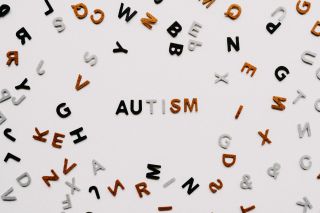Autism
What Can Parents Do to Help Their Autistic Child?
Parents can provide support and acceptance of autism.
Posted May 16, 2023 Reviewed by Michelle Quirk
Key points
- Parents should contact a pediatrician as soon as they become concerned that a child may be autistic.
- Parents can help to advance their child’s development through communication and encouraging social skills.
- We can increase our acceptance of autism by understanding first-hand experiences of autistic people.

If you are concerned that your child may meet the criteria for autism, contact your pediatrician or early-intervention services as soon as possible. Create a list of your concerns with specific examples. And remember that you can always seek a second opinion if you do not agree with their conclusions.
It is important for parents to understand that certain medical conditions can be associated with autism, so it may help to consult with a pediatrician or other medical professional if you are concerned about a diagnosis of autism. For example, research finds that 11 percent of autistic individuals may also have epilepsy. Other research estimates that up to 91 percent of individuals with autism may also have gastrointestinal problems.
Although you should seek help from professionals who specialize in working with autistic children if you are concerned about your child’s development, there are ways that parents can help to advance their child’s communication and social skills on their own. These may be especially helpful if your child does not meet criteria for services, but you still think they need some support, or if you have to wait for an evaluation or services. (Unfortunately, waiting lists for evaluation and early intervention are all too common.)
Here are a few ways parents can help to advance a child’s development:
Communication
- Incorporate more language into everyday routines. Working on language with your child doesn’t have to be a special activity that takes time out of your day. Simply work more language into your daily routine. For example, sing songs during bath time or use diaper changes to interact with your child.
- Narrate and label everything. As you go through the day, narrate what you or your child is doing, like a sportscaster would. Label anything your child notices, such as describing everything you see on a walk. The more language, the better. Follow their lead based on what they are interested in rather than requiring them to shift their attention to what you notice.
- Have back-and-forth conversations. Try to have back-and-forth conversations with your child throughout the day. If they cannot speak in words yet, respond to their gestures, babbling, or sounds as if it was language. (This video presents a great example of a conversation with a child who does not yet have many words.)
- Imitate what your child says and expand on it. Imitate your child’s speech by echoing it back to them (even if it is just babbling or noises). Then, expand on their communication to help them learn more complex speech. For example, if they say “ba” and you know they are referring to the “ball,” say “Ball! You want the ball!” Imitation encourages children to communicate more often, and expanding upon it helps them to learn the “next step” for more advanced communication.
- Give your child more opportunities to communicate. Create opportunities for your child to practice communicating. Sometimes, as parents, we know our children so well that we meet their needs before they even communicate them. However, this does not give children opportunities to practice communicating, and, as we all know, practice is essential to improving any skill. So rather than meeting your child’s needs before they ask, wait for them to communicate. For example, wait for them to ask for their favorite breakfast even if they eat the same thing every day; give them a toy or snack in a container that they can’t open and wait for them to ask you for help; wait for them to say or gesture for “up” before putting them in the swing at the playground, or pause during their favorite song to see if they finish it or request you to keep going.
Social Skills
- Face-to-face interaction: Get in their “spotlight." Imagine that your child’s attention is like a spotlight and try to stay in it. Get down on their level and pay attention to what they are paying attention to. To encourage eye contact, hold toys or favorite snacks near your eyes but do not force eye contact to the point of distressing your child.
- Learn through play. Play is the primary way that children learn any new skills, particularly social skills and emotional regulation. Teach children new social concepts through play, such as turn-taking, compromising, and playing cooperatively with another person. You can act out different scenarios that they might experience with other children their age. Children learn best through play and face-to-face interactions with caregivers. Turn off screens whenever possible; children learn better from people than even the most educational show or app.
- Insert yourself into their interests. Some children are not as motivated to engage in social interaction, and, therefore, may not acquire social skills to the same extent as children who are more interested. To increase your child’s interest, make social interaction more positive for them by integrating social opportunities into the interests they already have. To do this, follow their lead in play and engage in their interests with them.
- Find the smile. Make social interactions more enjoyable for children by “finding the smile” when interacting with them. For some children, this may mean quietly singing their favorite song and cuddling with them gently; for others, it may mean swinging them around wildly while you both scream. It may involve making silly noises, playing “tickle monster,” blowing raspberries on their belly, playing chase, or bouncing them on your knees—whatever it takes to make them smile (and keep smiling).
Autism Acceptance/Neurodiversity Awareness
It is important to clarify that there is nothing “wrong” with the brains of autistic individuals. Their brains work in a different way, not an inferior way. As parents and professionals, we are not trying to change the autism; we are trying to support the development of particular skills that may help them succeed in a world that wasn’t built for them. Many autism advocates argue that society should adapt to be more accepting of autism rather than autistic individuals having to change themselves to fit into a culture designed for neurotypical brains. This idea that we work toward accepting that humans have brains that work in a variety of ways is referred to as neurodiversity.
Research shows that when autistic adults feel accepted, they are less likely to experience stress or depression. Feeling a need to hide their autistic traits to fit in has been associated with anxiety, stress, and even suicidality in autistic adults. Autistic adults also report that trying to fit into a world that does not accept them is physically and mentally exhausting.
How can you increase your knowledge and acceptance of autism?
- Learn about autism and understand first-hand experiences of autistic people. A recent study found that informing neurotypical adults about autism and hearing the perspectives of autistic people increased their interest in social interaction with autistic adults and improved their first impressions of autistic adults.
- Learn about the many strengths associated with autism. Autism is associated with strengths including focus and attention to detail, strong long-term memory skills, creative problem-solving abilities, and enhanced visual and auditory processing.
- Educate others when you have an opportunity. For example, if your child sees someone flapping their arms or wearing headphones to block out loud noises, explain that they may experience the world in a different way.
- Seek out books that celebrate neurodiversity, such as Some Brains: A Book Celebrating Neurodiversity, A Friend for Henry, or All My Stripes. A great book for toddlers and preschoolers, available for free through the Kindle app, is We’re Amazing, 1,2,3!
- Ask the individual (or their family member if they are nonspeaking) what kind of language they would prefer to refer to their autism. Some individuals prefer “person-first” language (“a person with autism”) and some prefer “identity-first language” (“an autistic person”).
- Seek out additional resources to educate yourself about autism. Sesame Street created a free initiative to inform parents about autism, which increases knowledge and acceptance of autistic individuals. The Autistic Self Advocacy Network (ASAN) also provides resources explaining the autistic experience. Autism Level Up is a resource created by an autistic adult to increase awareness and acceptance.
References
Bailey J. A Friend for Henry.
Rudolph S, Royer D. All My Stripes: A Story for Children With Autism.
Kimmelman L. We're Amazing, 1, 2, 3! (Sesame Street)


